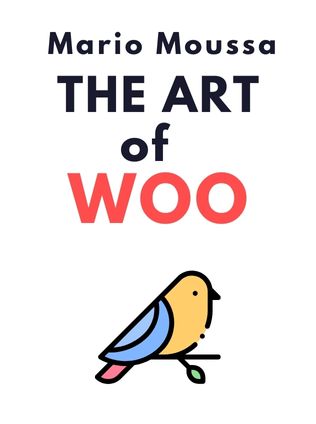
The Art of Woo
Using Strategic Persuasion to Sell Your Ideas
By Mario Moussa,
Published 12/2008
About the Authors
G. Richard Shell and Mario Moussa, co-authors of "The Art of Woo," are distinguished experts in the fields of negotiation and strategic persuasion. Shell, a professor at the Wharton School of the University of Pennsylvania, is known for his expertise in legal studies and management. He has authored several influential books, including "Bargaining for Advantage." His teaching and research focus on negotiation strategies, ethics, and decision-making. Moussa, a principal at CFAR Inc., a management consulting firm, also teaches at the Wharton School. His work spans leadership development, change management, and the dynamics of organizational culture. Together, they bring a wealth of experience from advising executives and studying historical figures known for their persuasive prowess.
Main Idea
"The Art of Woo" explores the concept of Woo—winning others over—through strategic persuasion. This process emphasizes relationship-based, emotionally intelligent persuasion rather than coercion. The book outlines a four-step framework that helps individuals navigate complex social and organizational landscapes to successfully sell their ideas. By understanding personal persuasion styles, building credibility, respecting others' beliefs, and aligning proposals with the interests of the audience, one can effectively influence decisions and drive change.
Table of Contents
- Introduction to Woo: Understanding Strategic Persuasion
- The Woo Process: Four Steps to Success
- Personal Persuasion Styles
- Building Relationships and Credibility
- Respecting Beliefs and Overcoming Barriers
- Incentivizing Agreement: The Power of Interests
- Making Your Case: Crafting a Compelling Argument
- Sealing the Deal: Closing the Persuasion Loop
- Persuasion Ethics: Woo with Integrity
Introduction to Woo: Understanding Strategic Persuasion
Strategic persuasion, as discussed in "The Art of Woo," is not about manipulating or overpowering others but about understanding and connecting with them. The concept is rooted in the idea that persuasion is an art form that blends emotional intelligence with effective communication. The authors highlight the importance of empathy and self-awareness in this process. For instance, they recount the story of Napoleon at the Siege of Toulon, where he motivated his troops by naming a risky artillery position "The Battery of Men Without Fear." This simple yet powerful act of naming appealed to the soldiers' sense of pride and bravery, demonstrating how emotional appeals can inspire action without force.
"Woo is about creating a connection that enables others to see things from your perspective, aligning their motivations with your goals." — G. Richard Shell
Shell and Moussa argue that persuasion is a crucial skill in both professional and personal settings. They note that the ancient rhetoricians, like Aristotle and Cicero, considered rhetoric—the art of persuasion—as one of the most essential skills for an educated person. Today, however, this skill is often overlooked or misunderstood, relegated to the realms of sales or politics. The book aims to reclaim the importance of persuasion, presenting it as a critical tool for anyone looking to influence change or sell ideas.
The Woo Process: Four Steps to Success
The Woo process is a structured approach to persuasion that can be applied across various contexts. The authors outline four essential steps:
Sign up for FREE and get access to 1,400+ books summaries.
You May Also Like
The Subtle Art of Not Giving a F*ck
A Counterintuitive Approach to Living a Good Life
By Mark MansonRich Dad Poor Dad
What the Rich Teach Their Kids About Money - That the Poor and Middle Class Do Not!
By Robert T. KiyosakiHow To Win Friends and Influence People
The All-Time Classic Manual Of People Skills
By Dale CarnegieQuiet: The Power of Introverts
The Power of Introverts in a World That Can't Stop Talking
By Susan Cain



















